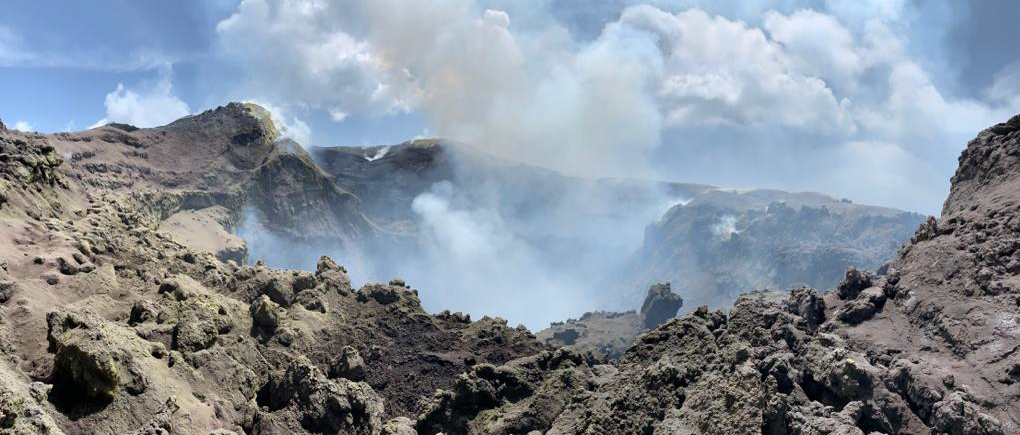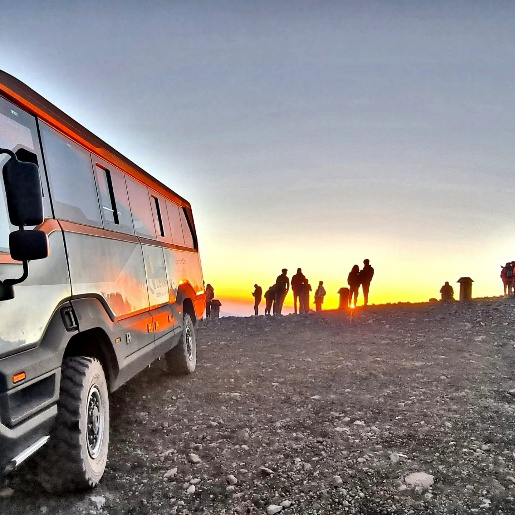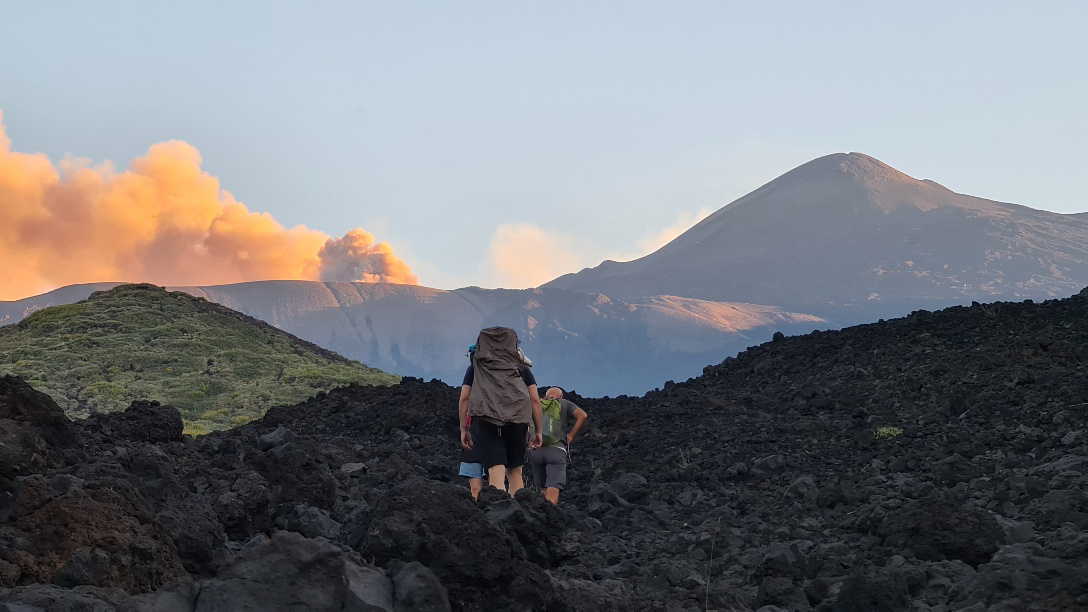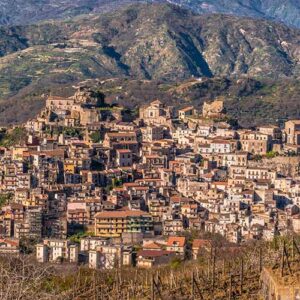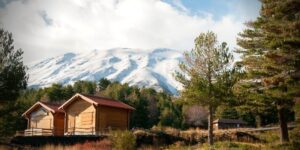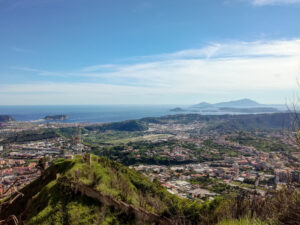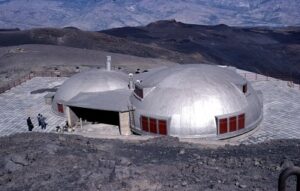Nestled in the northeastern corner of Sicily, the Nebrodi Mountains stand as a verdant oasis, a stark contrast to the arid landscapes that often come to mind when envisioning this sun-drenched Mediterranean island. This rugged mountain range, part of the Sicilian Apennines, offers a unique blend of natural wonders, rich biodiversity, and a fascinating cultural heritage that has shaped the region for centuries.
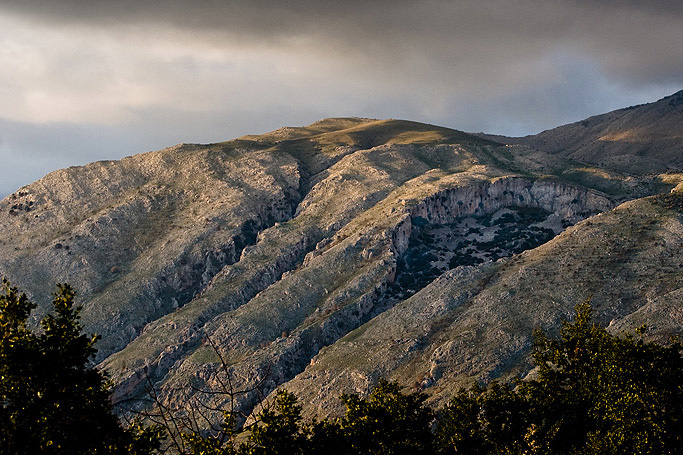
A Geographical Marvel
The Nebrodi Mountains stretch across the provinces of Messina, Enna, and Catania, forming a natural barrier between the Tyrrhenian Sea to the north and the imposing presence of Mount Etna to the south. This strategic location has played a pivotal role in the region’s history, serving as a defensive stronghold and a haven for various civilizations throughout the ages.At the heart of the Nebrodi lies Mount Soro, the range’s highest peak, reaching an impressive 1,847 meters (6,056 feet) above sea level. From its summit, visitors can take in breathtaking panoramic views that stretch from the azure waters of the Tyrrhenian to the smoldering crater of Mount Etna in the distance.
A Tapestry of Biodiversity
One of the defining features of the Nebrodi Mountains is its rich biodiversity, a testament to the region’s varied topography and microclimates. As you ascend from the coastal plains, you’ll encounter a tapestry of ecosystems, each with its own unique flora and fauna.The lower slopes are blanketed in lush Mediterranean maquis, a dense shrubland dominated by evergreen species like myrtle, lentisk, and strawberry trees. Higher up, the landscape transitions into verdant oak forests, where downy oaks, Turkey oaks, and the endemic Quercus gussonei thrive.At the highest elevations, the Nebrodi Mountains are cloaked in ancient beech forests, a true ecological marvel that covers over 10,000 hectares (24,700 acres) of the range’s ridgelines. These ancient woodlands are home to a diverse array of plant and animal life, including rare and endemic species like the Sicilian fir, the Sicilian long-tailed tit, and the elusive Sicilian wildcat.
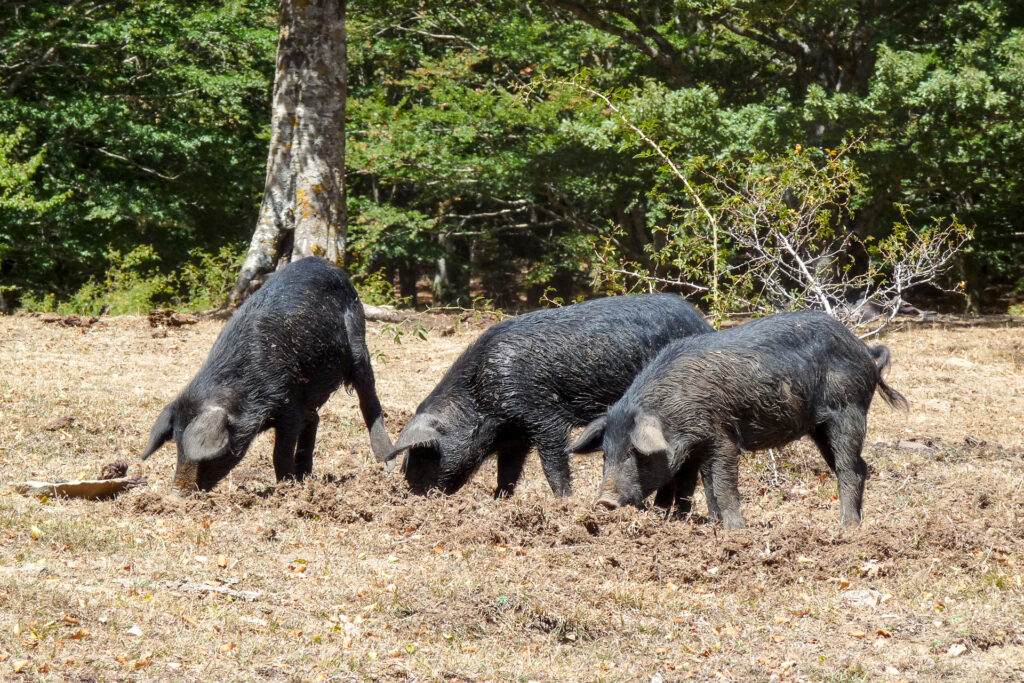
A Cultural Tapestry
The Nebrodi Mountains have been shaped not only by nature but also by the various civilizations that have called this region home throughout history. From the ancient Sikel tribes to the Greeks, Romans, Arabs, and Normans, each culture has left an indelible mark on the landscape and traditions of the Nebrodi.Scattered throughout the mountains are remnants of this rich heritage, including ancient settlements, medieval castles, and picturesque villages that seem frozen in time. One of the most notable archaeological sites is the ancient Sikel town of Herbita, known for its role in events that unfolded in Sicily during the 5th century BC.The cultural legacy of the Nebrodi is also reflected in its culinary traditions, which draw heavily from the bounty of the land. Local specialties include artisanal cheeses, cured meats, and robust wines produced from the vineyards that cling to the mountain slopes.
A Natural Sanctuary
In recognition of its unique natural and cultural significance, large swaths of the Nebrodi Mountains were designated as a regional park in 1993. The Parco Naturale Regionale dei Nebrodi encompasses over 85,000 hectares (210,000 acres) of protected land, making it one of the largest natural reserves in Sicily.Within the park’s boundaries, visitors can explore a network of hiking trails that wind through ancient forests, past crystal-clear streams, and along rugged ridgelines that offer panoramic vistas. For the more adventurous, the park also offers opportunities for rock climbing, caving, and other outdoor pursuits.Whether you’re a nature enthusiast, a history buff, or simply someone seeking a respite from the hustle and bustle of modern life, the Nebrodi Mountains offer a truly unique and unforgettable experience. This verdant heartland of Sicily invites you to immerse yourself in its natural splendor, to unravel the layers of its rich cultural tapestry, and to discover a side of the island that few visitors have the privilege of witnessing


